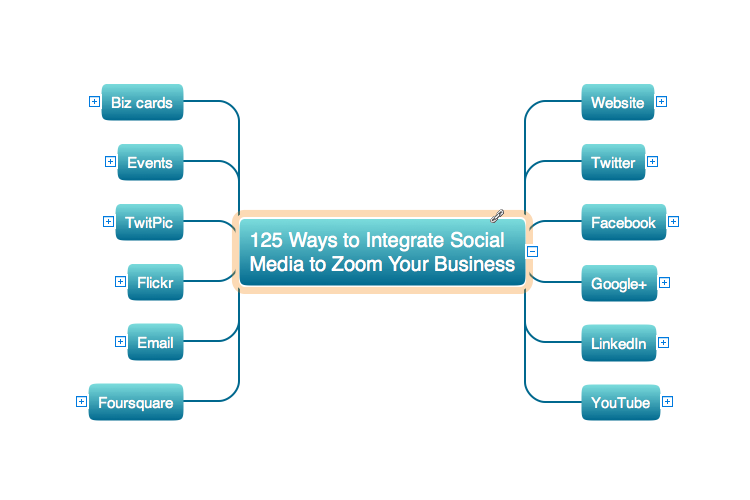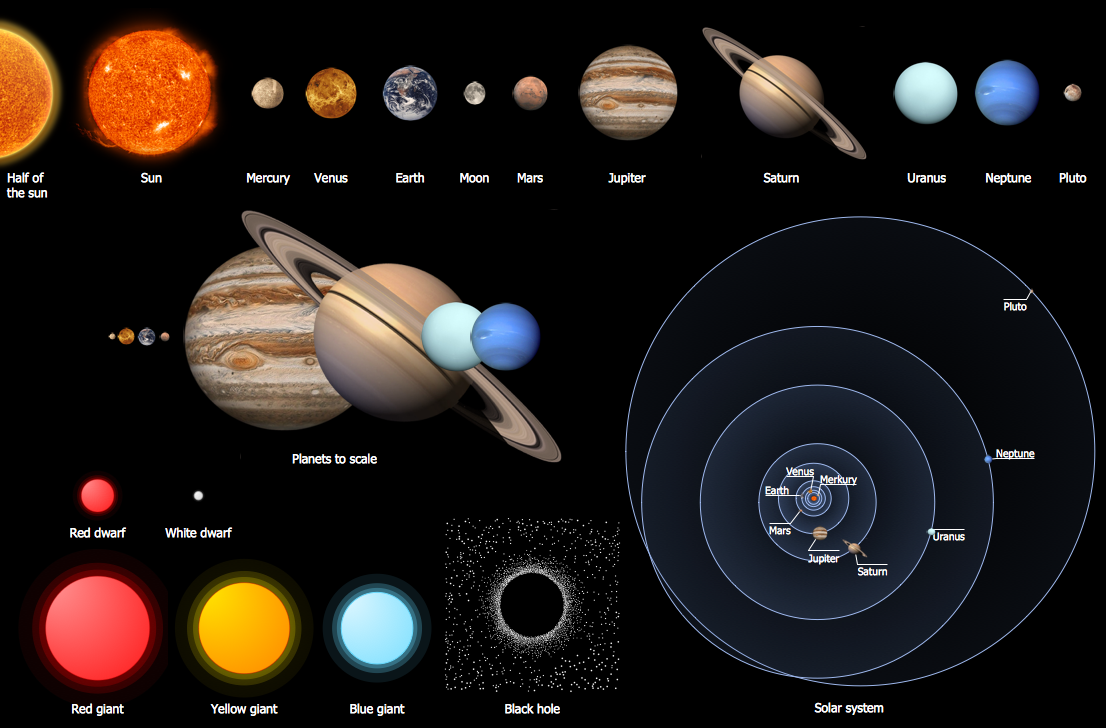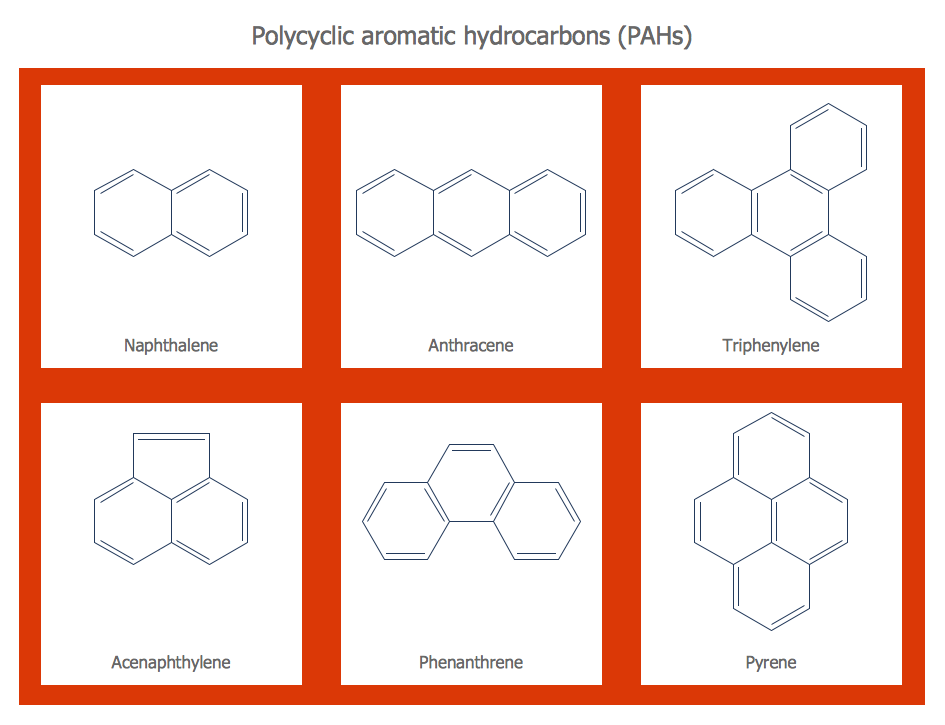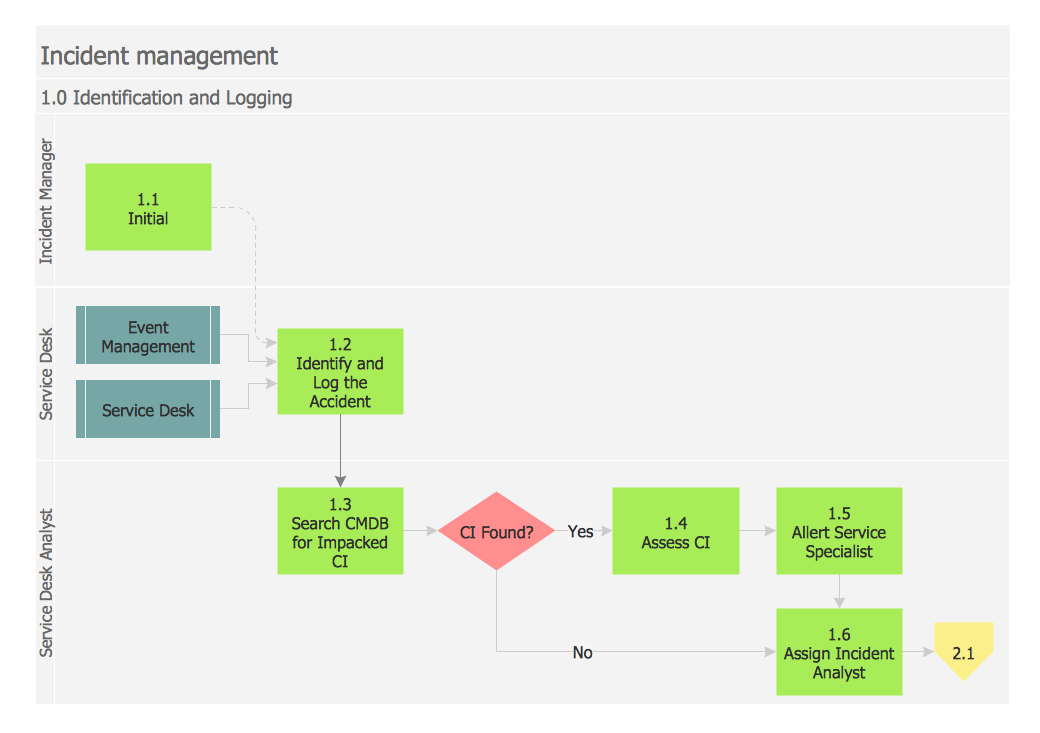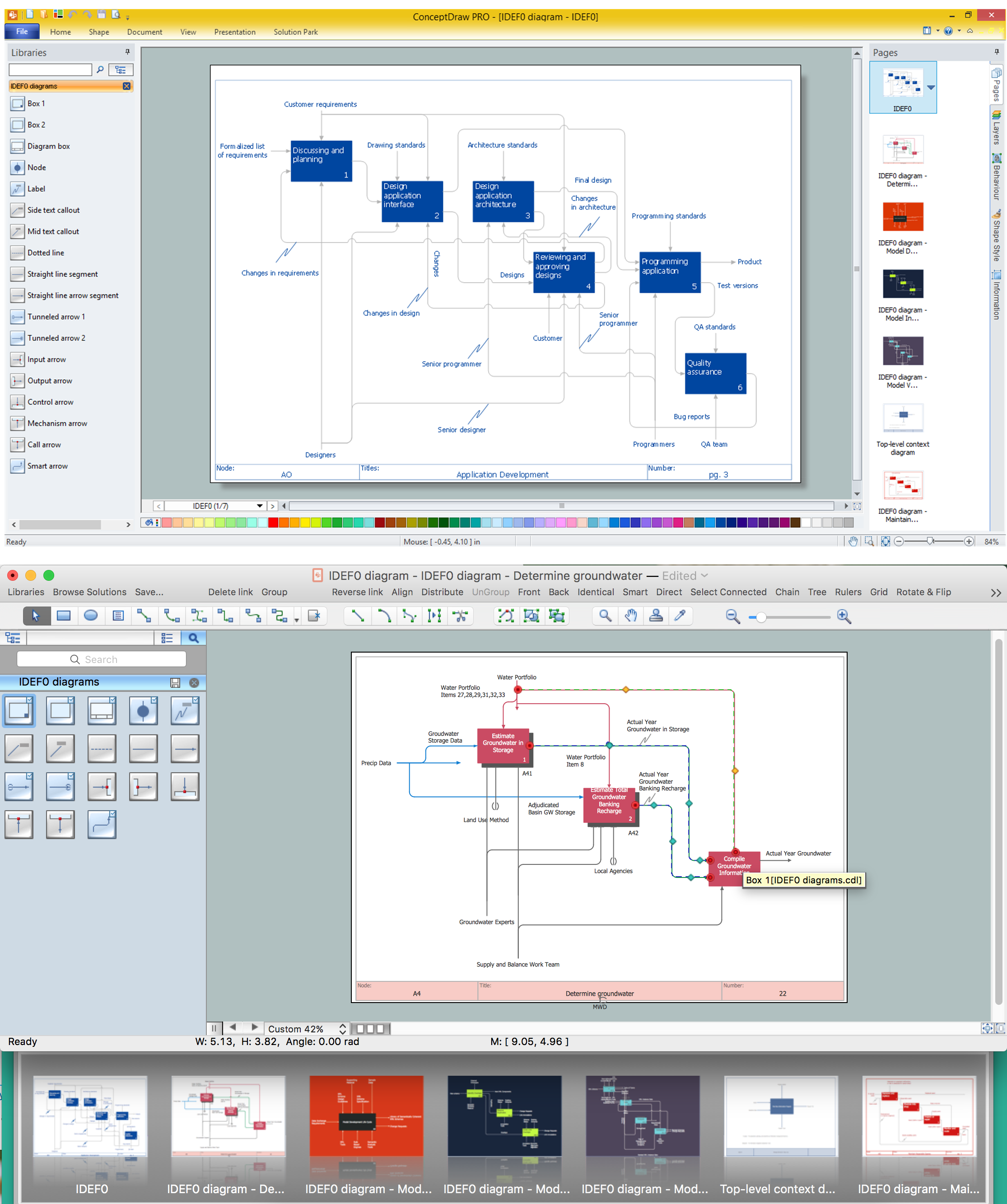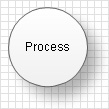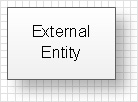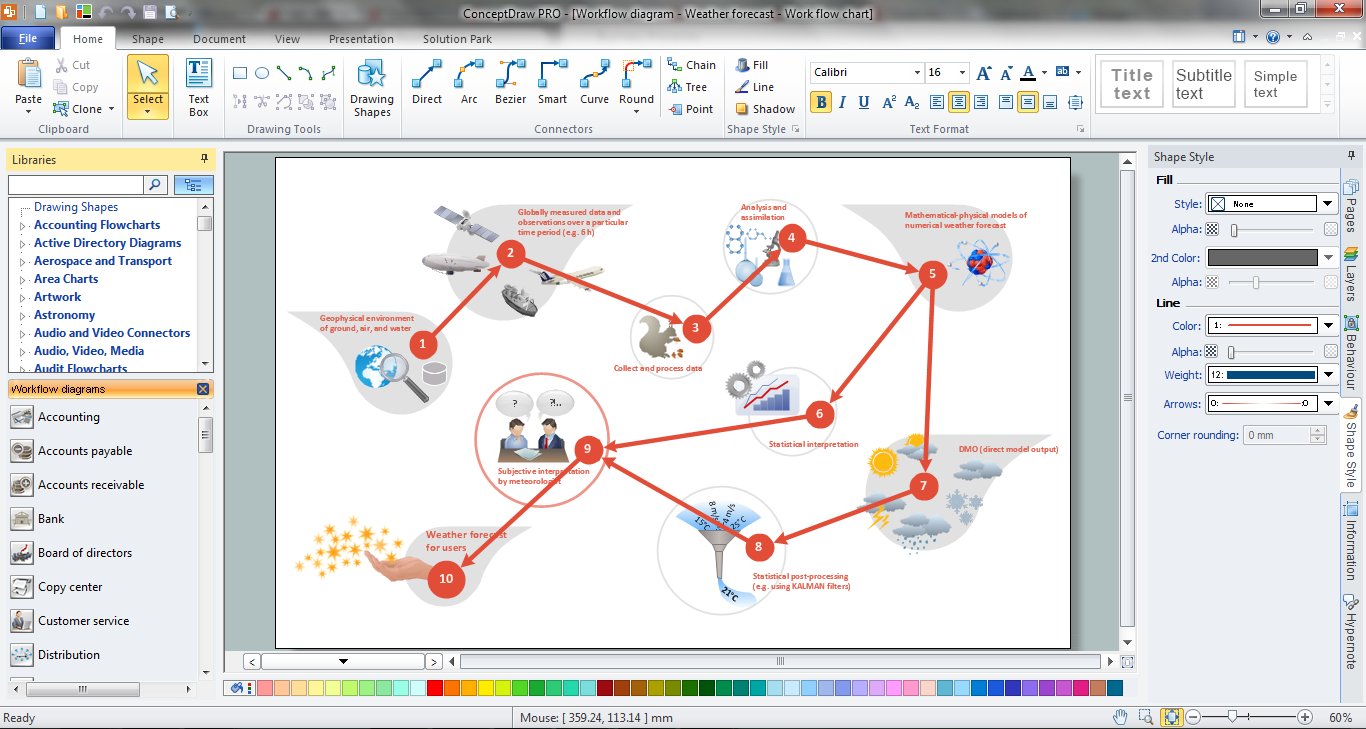Data Flow Diagram
|
Data Flow Diagram (DFD) is the part of the SSADM method (Structured Systems Analysis and Design Methodology), intended for analysis and information systems projection. Data Flow Diagrams are intended for graphical representation of data flows in the information system and for analysis of data processing during the structural projection. By means of data flow diagrams, it is possible to show visually the work of the information system and the results of this work. Data Flow Diagram visualizes processes, data depositories, and external entities in information systems and data flow connecting these elements. Data Flow Diagram consists of the following components:
This variant of presentation of Data Flow Diagram objects got the name of Yourdon – de Marco notation.
Objects of Data Flow Diagrams are interpreted in the following way:
Every diagram object should have a name. Each data flow is denoted with an indication of transferred data and with the possibility of an indication of the format of these data. Data Flow Diagram should not involve more than 10 objects, excluding arrows, representing data flows. In the case of a more complicated system, the totality of several objects (as a rule, processes) is united and represented on the diagram in the form of one object. This complicated compound object is presented in the form of a separate flow diagram. Each component has a number, at this, diagrams illustrating compound objects are numerated starting from the number of an object which they describe. For example components of the diagram of the description of an object with number 5 will be enumerated 5.1, 5.2, etc. Generally, Process Flow Diagram depicts just the major equipment without details. For clearness, there is a possibility to duplicate notations of used data depositories and external entities. Processes can’t be duplicated. For example, if one the same data depository is used in several different processes it is better to duplicate it on the diagram but not to create several intricate data flow arrows from one object to several processes. This concerns external entities as well. Duplicates of data depositories are marked with the double line from the left side, external entities duplicates - with the asterisk. Data flow on the diagram can ramify and merge which implies branching or confluence of data in the information system. |
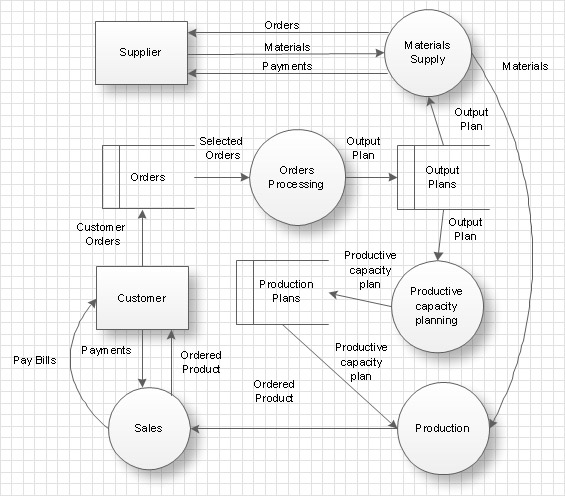
Example 1. Data Flow Diagram
Thus the information system is represented by a planner in the form of the high-level DFD in which objects are worked out in detail by diagrams of the lower level with the preset level of detailed elaboration. There is also another way of looking at which all events in the system are described at once and each event is represented in the form of process transforming data flows, further these sub runs are grouped for getting diagrams of the higher level.
Example 2. Data Flow Diagram in ConceptDraw DIAGRAM
The following features make ConceptDraw DIAGRAM extended with Data Flow Diagrams Solution the best Data Flow Diagram software:
- You don't need to be an artist to draw professional-looking diagrams in a few minutes.
- Large quantity of ready-to-use vector objects makes your drawing diagrams quick and easy.
- A great number of predesigned templates and samples give you a good start for your own workflow diagram or process flow diagram.
- ConceptDraw DIAGRAM provides you the possibility to use the grid, rules, and guides. You can easily rotate, group, align, arrange the objects, use different fonts and colors to make your organizational workflow diagram exceptionally looking.
- All ConceptDraw DIAGRAM documents are vector graphic files and are available for reviewing, modifying, and converting to a variety of formats: image, HTML, PDF file, MS PowerPoint Presentation, Adobe Flash, MS Visio.
- Using ConceptDraw STORE you can navigate through ConceptDraw Solution Park, managing downloads and updates. You can access libraries, templates, and samples directly from the ConceptDraw STORE.
- If you have any questions, our free of charge support is always ready to come to your aid.
